STOLONIFERA Moran, 1950
Subgenus Dudleya
Distribution : USA (California: San Joaquin Hills in the Orange County); North-exposed cliffs, rocky places, to 250 m, endangered.
Description (according to J. Thiede in IHSP, 2003):
Stems > 10 x 1.5 - 3 cm in diameter.
Rosettes 5 - 12 cm in diameter, with 15 - 25 leaves, solitary, but branching by the way of stolons (> 5 cm) from the axil of the lower leaves.
Leaves oblong-obovate, shortly attenuate-pointed, 3 - 7 x 1.5 - 3 (basally 1 - 2) cm, bright green, not at all glaucous.
Inflorescence : Scape 8 - 20 (-25) cm, inflorescence usually with 2 (rarely more) not or rarely 1x branched ascending scorpioid branches, these 1 - 6 cm, with 3 - 9 flowers, pedicels 5 - 8 mm.
Flowers : Calyx 3 - 4 mm, sepals triangular, broader than long, 2 - 3 mm, petals elliptic, only apically recurved, acute, 10 - 11 x 3 - 3.5 mm, bright yellow, tube 1 - 2 mm.
Flowering time : May to June.
Cytology : n = 17
This is the only (but see below, D. alisoensis) stoloniferous species of the genus. Other species branch almost exclusively dichotomously and the formation of lateral shoots is rare. The species forms hybrids with D. edulis according to the protologue and Moran (1951a). The equally stoloniferous D. x alisoensis from the same geographical range is apparently such a hybrid (though octoploid).
In habitat in Orange County, CA, USA :
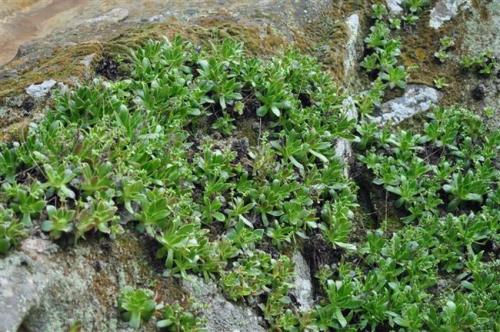
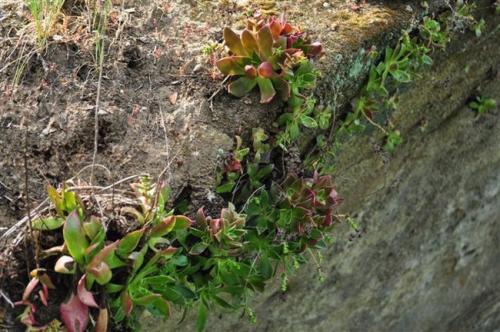
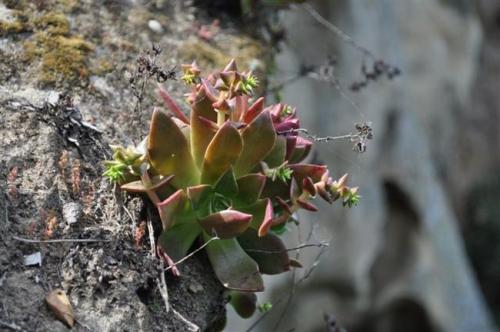
Photos Michael Wisnev
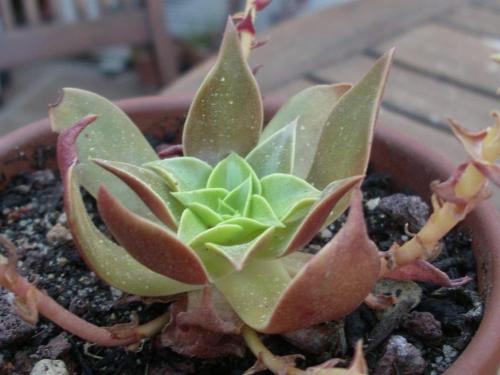
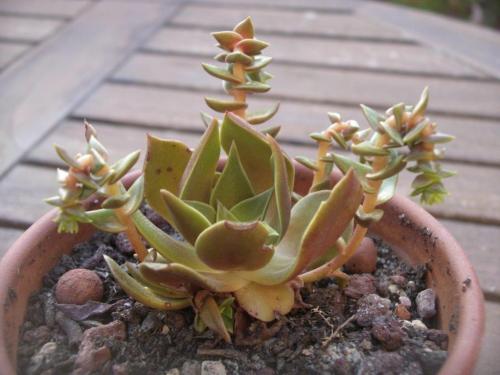
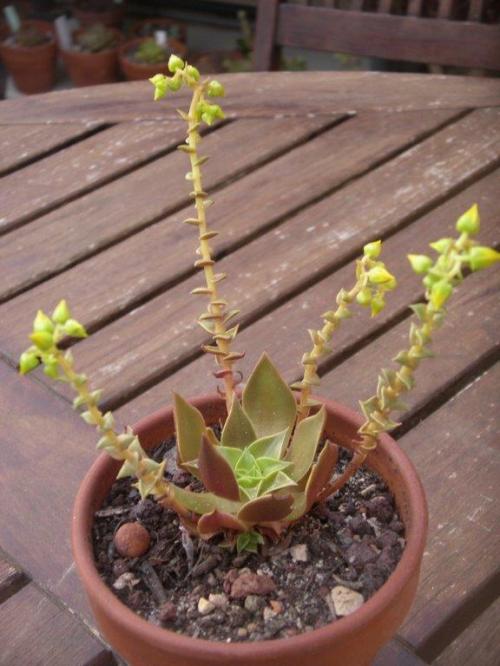
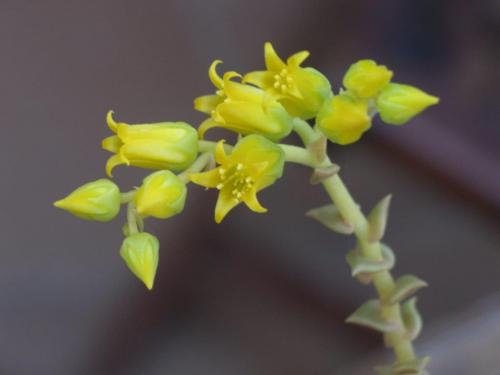
Laguna Canyon, CA.
Photos Mateo Lichtenstein